
Last week, SIRO
announced the next stage of our fibre network expansion – a €620 million investment that will almost double our existing network footprint, reaching 770,000 homes and businesses and up to 2.1 million people across Ireland over the next four years. Combined with our existing investment as part of the first phase of our broadband network roll-out, it takes our total investment in building a new 100% fibre network to almost one billion euro overall.
The answer as to why, SIRO is investing this level of capital, can be summed up in a word – demand.
Demand from homes and businesses for reliable connectivity which gives people what they need today but also is future proofed for what they will need tomorrow. Many of the patterns of living that we have become accustomed to over recent months, such as remote working, online education or eHealth, shopping online or streaming or video calls for work or personal reasons or increased use of cloud-based technologies, were all slowly taking root before the pandemic. COVID-19 accelerated their usage from the margins to the everyday.
COVID-19 also exposed the inadequacies of our existing broadband infrastructure across Ireland – and in both urban and regional areas. Equally, any doubts of high-quality fibre gigabit broadband being a luxury vs. a necessity were quickly dispelled as data demands skyrocketed. Like so many other areas of our lives, the
pandemic forced a rethink of how connectivity, and broadband as the engine to deliver it, became framed in the public conscious.
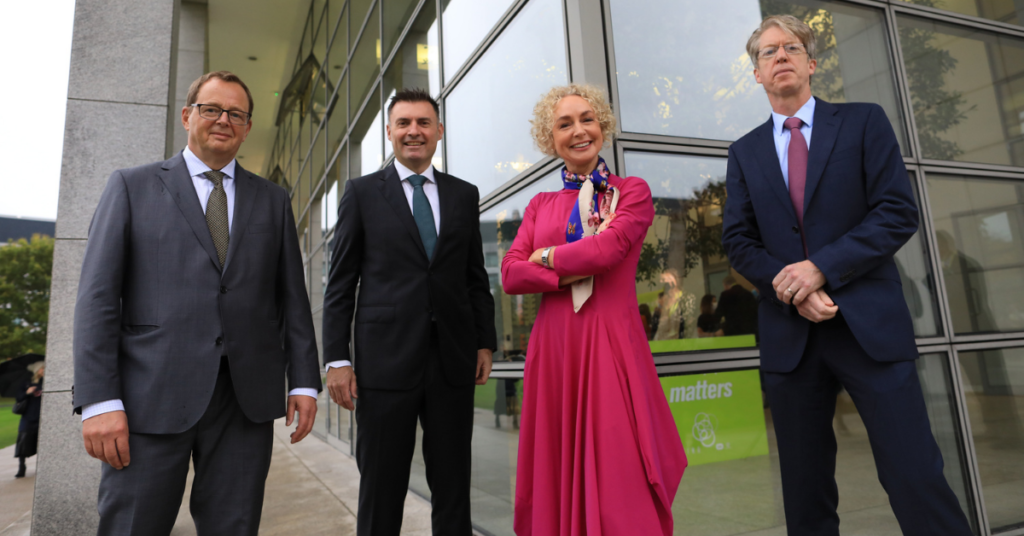
People now need, want and expect seamless connectivity to allow them to do what matters most in their lives in a convenient and easy way. So, whether its’s allowing them to live where they want, and increasingly many are choosing to do so away from our congested cities or working flexible hours which matches their lifestyles and family needs or both staying connected and spending more time with loved ones; the fact is that none of this is possible without high quality broadband. It is now the cornerstone which is unlocking the means to allow people to live in a different and more sustainable way. Once motorway were the key arteries to bridging people to and from where they lived and worked, now broadband networks are increasingly fulfilling this role. And therein lies the crux of the problem Ireland still faces, and to which SIRO last week committed to contribute to fixing in a meaningful way - large parts of Ireland still cannot access high quality broadband.
It’s why we have committed to increase our existing network reach from 410,000 premises to 770,000 premises over the next four years. This also means we will increase the number of towns across Ireland from 64 currently to 154, an additional 90 towns, who can access the SIRO network.
In short more families, more communities and more towns will be fibre enabled - supporting the digital agenda and delivering benefits to more regional towns across Ireland.
Since SIRO was founded in 2015, we have always been keenly aware of the demand across Ireland for our 100% fibre-to-the-home, reliable broadband.
Typically, once a SIRO van is spotted in a neighbourhood, our technicians are quickly approached by residents in that estate or even those surrounding it looking for information on when they can get connected. Since COVID-19 began, and understandably, as people whether willingly or not found themselves working from home, the level of consumer understanding of connectivity and what amounts to a good broadband connection has also become ever more sophisticated. Back when SIRO began its’ journey to build Ireland’s first 100% fibre broadband network most people either didn’t know what a fibre connection was, were unclear what connection they had and certainly weren’t comfortable navigating a conversation on copper vs. fibre broadband.
This is changing fast.

More and more people now are aware that fibre broadband offers a gold standard service, which, most of all, they can depend on. Given, that it is future proofed to speeds of up to 25 Gigabits, it is also likely the last connection they will ever need. Last week with COP26, global leaders are focused on climate change, reducing emissions and finding ways for humanity to live more sustainably but equally juggling how the world adapts and recovers from the pandemic,
fibre broadband can play a key role here too.
Examples include increased working from home or in hubs closer to where we will live, taking cars off our roads thereby reducing emissions or underpinning smart technologies in our towns and cities delivering benefits such as greater energy efficiency or using natural resources better.
It is apparent that copper switch off is happening all over the world and in Ireland.
Fibre itself when compared to older outdated copper or cable broadband technologies is also much more environmentally friendly with less emissions and lower energy consumption. As SIRO now sets off on the next phase of our development and the work to bring our network to tens of thousands of more homes and businesses across Ireland begins, we are conscious that there is still much work to be done to make a full fibre Ireland a reality for all. Ireland is currently at a halfway point in our fibre broadband journey, j
ust over 50% of homes and businesses can access a fibre network, while approximately 13% are connected to one.
There remains much work to be done. Yet if we take a view that companies like SIRO, who have already rolled out to over 410,000 premises now have an intent to reach the remaining half of the population in an accelerated and faster timespan, our decision-makers must now also increasingly factor the benefits and opportunities which arise from a fully connected Ireland.
Ireland’s fibre networks will be a strategic asset for decades to come, delivering huge social and economic benefits for decades to come. We can’t waste the opportunities they unlock. Our policymakers must now really consider the wide range of areas which fibre broadband can influence such as how and where we live, how public services are delivered, the skills and expertise required by our workforce in a digital age and above all how we can leverage technology to allow our country to prosper but in a way which does not harm our planet.
Search Your Eircode Today

 The gold standard, what does it mean? It’s a term thrown about by many that can be applied to virtually anything: broadband, accommodation, even a cup of coffee.
For myself, as CTO of SIRO, it means achieving and maintaining superior quality of customer service that inspires others to follow suit. Irish people have always valued quality customer service that’s delivered with care. Since the pandemic, there has been a notable shift in customers valuing trust and mutual understanding from their service providers. A
The gold standard, what does it mean? It’s a term thrown about by many that can be applied to virtually anything: broadband, accommodation, even a cup of coffee.
For myself, as CTO of SIRO, it means achieving and maintaining superior quality of customer service that inspires others to follow suit. Irish people have always valued quality customer service that’s delivered with care. Since the pandemic, there has been a notable shift in customers valuing trust and mutual understanding from their service providers. A 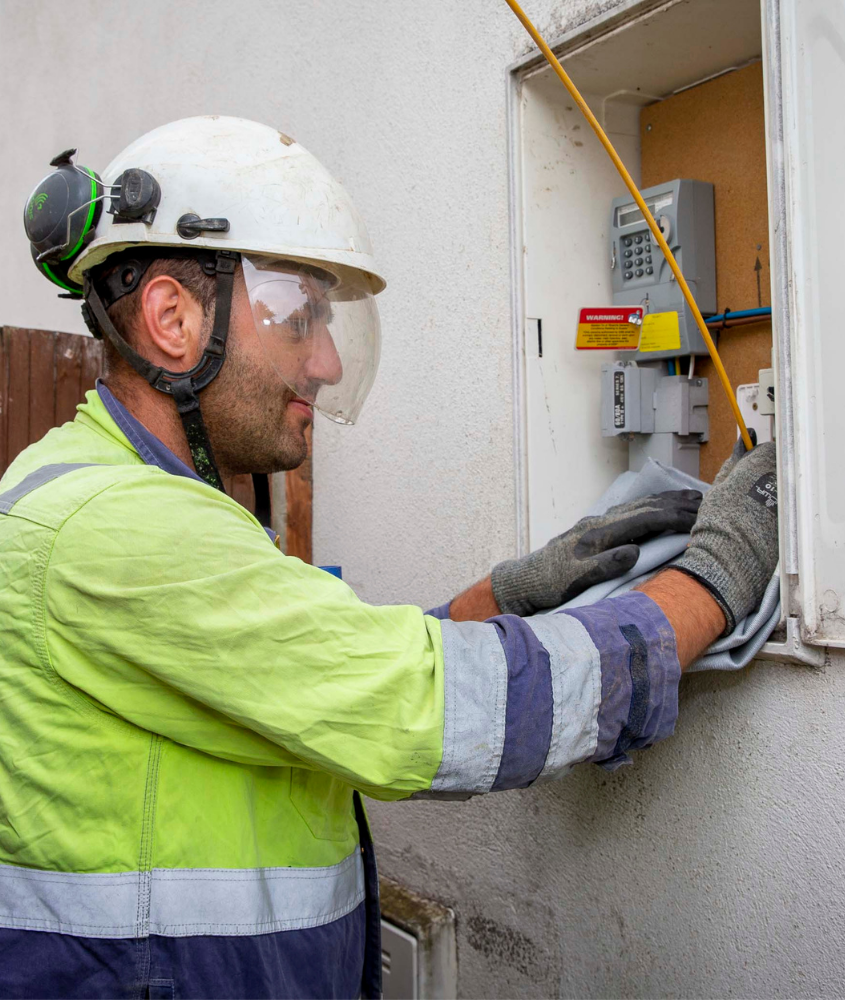 While our retailers primarily offer
While our retailers primarily offer 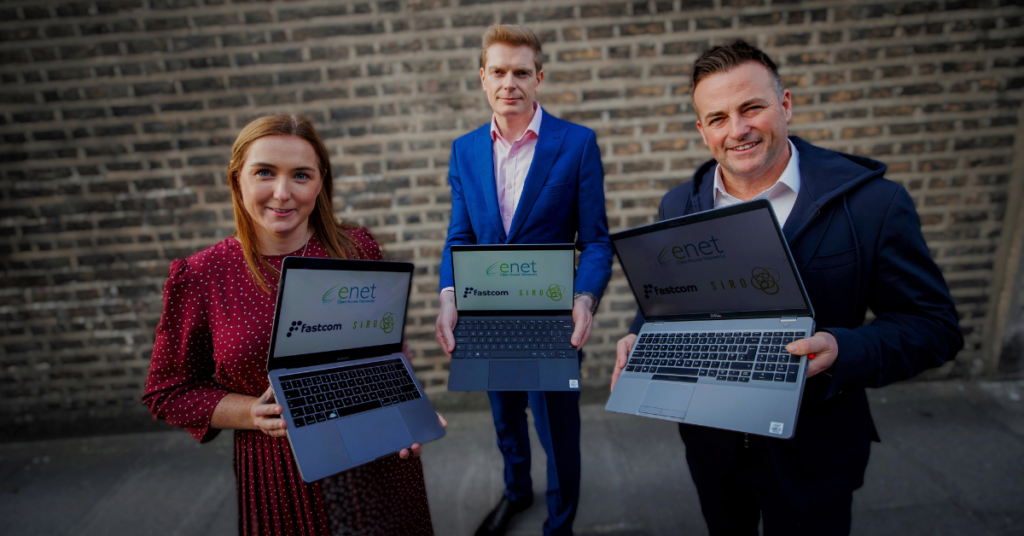 Enet, Ireland’s largest open-access network operator, has today announced an agreement worth up to €5 million with Fastcom. Through this new partnership, enet is delivering Fastcom access to SIRO’s fibre infrastructure meaning they can facilitate high-speed broadband to 350,000 potential premises in regional towns across Ireland.
The agreement will deliver speeds of up to 1Gbps and will ensure further competition in the broadband market by giving Fastcom access to additional locations equipped with gigabit technology. Through this, enet will enable Fastcom to provide the fastest possible broadband speeds to more communities across Ireland.
Cormac Ryan, Commercial Director of enet, said: “We are delighted to have agreed this partnership with Fastcom which provides them with access to the SIRO network. This will offer them the opportunity to deliver high-speed broadband to an increasing number of regional locations. We are delighted to be working alongside Fastcom to ensure our investments in cutting-edge technology benefit more people across the country.”
Lorraine Gibbons, Managing Director of Fastcom, said: “We are delighted to announce this deal and to continue our ongoing relationship with enet. This enables us to expand our product portfolio with access to the nationwide SIRO network and, as an independent broadband provider, it means we can offer the best possible solution for any customer in any location. Demand for gigabit broadband is increasing all the time and now, with the availability of SIRO services, we can offer this to our ever-growing business and residential customer base throughout the country.”
Ronan Whelan, Chief Commercial Officer of SIRO, added: “Since our foundation, SIRO’s objective has been to expand access across Ireland to reliable and resilient fibre broadband. Today’s announcement furthers that ambition and brings Gigabit connectivity to the heart of even more Irish homes and businesses - allowing them to do life different.”
Enet, Ireland’s largest open-access network operator, has today announced an agreement worth up to €5 million with Fastcom. Through this new partnership, enet is delivering Fastcom access to SIRO’s fibre infrastructure meaning they can facilitate high-speed broadband to 350,000 potential premises in regional towns across Ireland.
The agreement will deliver speeds of up to 1Gbps and will ensure further competition in the broadband market by giving Fastcom access to additional locations equipped with gigabit technology. Through this, enet will enable Fastcom to provide the fastest possible broadband speeds to more communities across Ireland.
Cormac Ryan, Commercial Director of enet, said: “We are delighted to have agreed this partnership with Fastcom which provides them with access to the SIRO network. This will offer them the opportunity to deliver high-speed broadband to an increasing number of regional locations. We are delighted to be working alongside Fastcom to ensure our investments in cutting-edge technology benefit more people across the country.”
Lorraine Gibbons, Managing Director of Fastcom, said: “We are delighted to announce this deal and to continue our ongoing relationship with enet. This enables us to expand our product portfolio with access to the nationwide SIRO network and, as an independent broadband provider, it means we can offer the best possible solution for any customer in any location. Demand for gigabit broadband is increasing all the time and now, with the availability of SIRO services, we can offer this to our ever-growing business and residential customer base throughout the country.”
Ronan Whelan, Chief Commercial Officer of SIRO, added: “Since our foundation, SIRO’s objective has been to expand access across Ireland to reliable and resilient fibre broadband. Today’s announcement furthers that ambition and brings Gigabit connectivity to the heart of even more Irish homes and businesses - allowing them to do life different.”
 Last week, SIRO
Last week, SIRO  People now need, want and expect seamless connectivity to allow them to do what matters most in their lives in a convenient and easy way. So, whether its’s allowing them to live where they want, and increasingly many are choosing to do so away from our congested cities or working flexible hours which matches their lifestyles and family needs or both staying connected and spending more time with loved ones; the fact is that none of this is possible without high quality broadband. It is now the cornerstone which is unlocking the means to allow people to live in a different and more sustainable way. Once motorway were the key arteries to bridging people to and from where they lived and worked, now broadband networks are increasingly fulfilling this role. And therein lies the crux of the problem Ireland still faces, and to which SIRO last week committed to contribute to fixing in a meaningful way - large parts of Ireland still cannot access high quality broadband. It’s why we have committed to increase our existing network reach from 410,000 premises to 770,000 premises over the next four years. This also means we will increase the number of towns across Ireland from 64 currently to 154, an additional 90 towns, who can access the SIRO network.
People now need, want and expect seamless connectivity to allow them to do what matters most in their lives in a convenient and easy way. So, whether its’s allowing them to live where they want, and increasingly many are choosing to do so away from our congested cities or working flexible hours which matches their lifestyles and family needs or both staying connected and spending more time with loved ones; the fact is that none of this is possible without high quality broadband. It is now the cornerstone which is unlocking the means to allow people to live in a different and more sustainable way. Once motorway were the key arteries to bridging people to and from where they lived and worked, now broadband networks are increasingly fulfilling this role. And therein lies the crux of the problem Ireland still faces, and to which SIRO last week committed to contribute to fixing in a meaningful way - large parts of Ireland still cannot access high quality broadband. It’s why we have committed to increase our existing network reach from 410,000 premises to 770,000 premises over the next four years. This also means we will increase the number of towns across Ireland from 64 currently to 154, an additional 90 towns, who can access the SIRO network.
 More and more people now are aware that fibre broadband offers a gold standard service, which, most of all, they can depend on. Given, that it is future proofed to speeds of up to 25 Gigabits, it is also likely the last connection they will ever need. Last week with COP26, global leaders are focused on climate change, reducing emissions and finding ways for humanity to live more sustainably but equally juggling how the world adapts and recovers from the pandemic,
More and more people now are aware that fibre broadband offers a gold standard service, which, most of all, they can depend on. Given, that it is future proofed to speeds of up to 25 Gigabits, it is also likely the last connection they will ever need. Last week with COP26, global leaders are focused on climate change, reducing emissions and finding ways for humanity to live more sustainably but equally juggling how the world adapts and recovers from the pandemic, 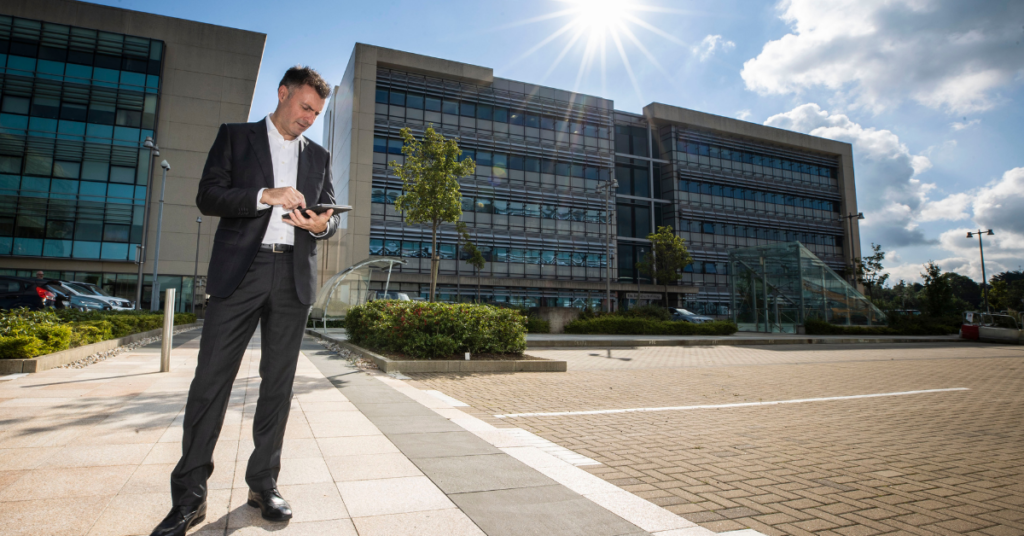
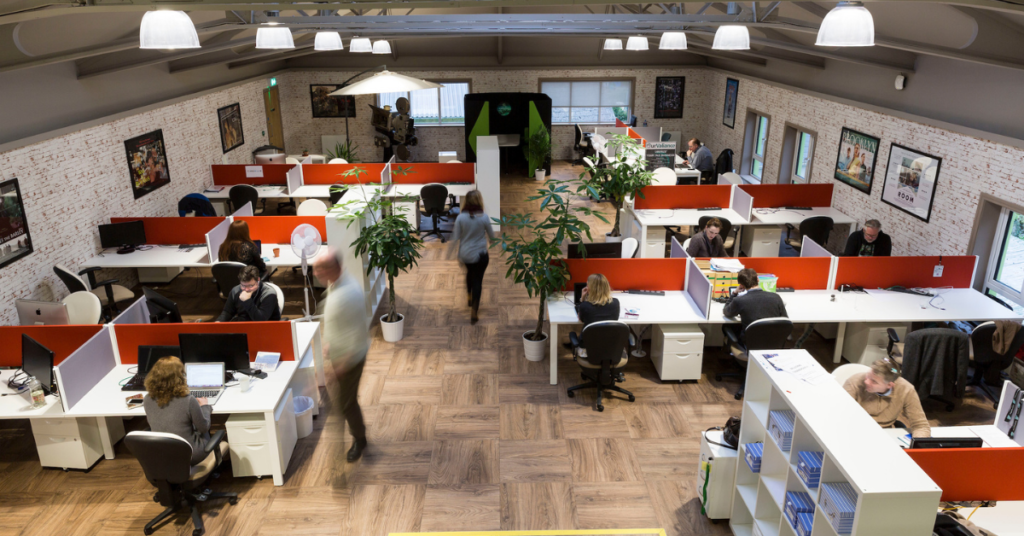
 Early this month, Vodafone announced a new digital skills training programme for older people in Ireland, supported by Alone and Active Retirement Ireland. The programme aims to reach 230,000 older people over the next five years. The initiative is hugely welcome. It can make a significant contribution in bridging the gap between digital haves and have-nots. The digitisation of all facets of how we live often leaves those without technological literacy feeling disenfranchised.
Many of us have experienced becoming the tech support for our parents or elderly relatives during COVID-19, connecting Zoom calls to relatives abroad, booking the COVID-19 vaccine online or setting up online supermarket home deliveries. Being connected was a lifeline for many cocooning during the pandemic. Yet many had to wait for their children or friends to get set up on tablets or iPads. Moreover, there were those who didn’t have anyone they could call and were quite literally left to their own devices. Independence is something everyone values, so Vodafone’s initiative respects this by providing those with poor digital skills with the autonomy to learn digital skills for themselves.
Early this month, Vodafone announced a new digital skills training programme for older people in Ireland, supported by Alone and Active Retirement Ireland. The programme aims to reach 230,000 older people over the next five years. The initiative is hugely welcome. It can make a significant contribution in bridging the gap between digital haves and have-nots. The digitisation of all facets of how we live often leaves those without technological literacy feeling disenfranchised.
Many of us have experienced becoming the tech support for our parents or elderly relatives during COVID-19, connecting Zoom calls to relatives abroad, booking the COVID-19 vaccine online or setting up online supermarket home deliveries. Being connected was a lifeline for many cocooning during the pandemic. Yet many had to wait for their children or friends to get set up on tablets or iPads. Moreover, there were those who didn’t have anyone they could call and were quite literally left to their own devices. Independence is something everyone values, so Vodafone’s initiative respects this by providing those with poor digital skills with the autonomy to learn digital skills for themselves.
 This week, SIRO announced that we’re launching Ireland’s first
This week, SIRO announced that we’re launching Ireland’s first  My second answer was that providing extra bandwidth allows our partner retail telcos to be innovative in the services they provide. For example, they might dedicate 500Mb to your gaming console; 500Mb to your remote working devices, to ensure lag-free video conferencing; and 1Gb to the general house Wi-Fi. We already see this happening in other countries where 2Gb services have been around for longer, and we’re looking forward to watching Irish broadband providers use SIRO connection to come up with innovative ways to make the most of the extra bandwidth we can now provide.
My second answer was that providing extra bandwidth allows our partner retail telcos to be innovative in the services they provide. For example, they might dedicate 500Mb to your gaming console; 500Mb to your remote working devices, to ensure lag-free video conferencing; and 1Gb to the general house Wi-Fi. We already see this happening in other countries where 2Gb services have been around for longer, and we’re looking forward to watching Irish broadband providers use SIRO connection to come up with innovative ways to make the most of the extra bandwidth we can now provide.
 As more people move to working from home, businesses increasingly depend on high-quality fibre connections for video calls, remote access, and backing up increasing volumes of data. We saw this in action when we upgraded Cartoon Saloon to our symmetric fibre services during lockdown last year, so that they could continue to work on their Academy Award-nominated film Wolfwalkers while their staff remained safely remote. Getting more businesses online with more reliable fibre connections is key to helping Irish companies evolve and compete globally for both business and talent.
As more people move to working from home, businesses increasingly depend on high-quality fibre connections for video calls, remote access, and backing up increasing volumes of data. We saw this in action when we upgraded Cartoon Saloon to our symmetric fibre services during lockdown last year, so that they could continue to work on their Academy Award-nominated film Wolfwalkers while their staff remained safely remote. Getting more businesses online with more reliable fibre connections is key to helping Irish companies evolve and compete globally for both business and talent.
 Today 11th October, we announce Ireland’s first 2 Gigabit fibre broadband service for Irish homes – twice as powerful as the best broadband speeds currently available.
We announced today that we have commenced the roll-out of our 2 Gigabit fibre broadband service to Kilkenny city homes, making it the broadband capital of Ireland for the quality of service available. We are currently upgrading our existing fibre broadband network across the city to facilitate the increased bandwidth. From next week (19th October), households in the city will be able to pre-order the 2 Gigabit product and can avail of the service from Vodafone, Blacknight and Pure Telecom.
While
Today 11th October, we announce Ireland’s first 2 Gigabit fibre broadband service for Irish homes – twice as powerful as the best broadband speeds currently available.
We announced today that we have commenced the roll-out of our 2 Gigabit fibre broadband service to Kilkenny city homes, making it the broadband capital of Ireland for the quality of service available. We are currently upgrading our existing fibre broadband network across the city to facilitate the increased bandwidth. From next week (19th October), households in the city will be able to pre-order the 2 Gigabit product and can avail of the service from Vodafone, Blacknight and Pure Telecom.
While 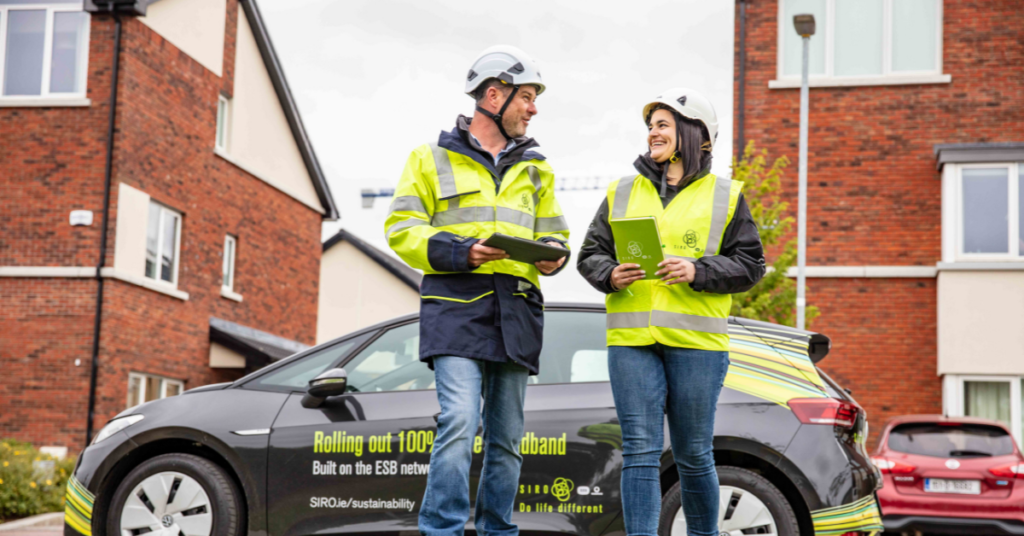 We confirmed several locations were closely in the running to be Irelands’ first 2 Gigabit town, but Kilkenny was selected for several reasons including its active SIRO customer base; the presence of several broadband retailers based in the city offering SIRO broadband to local homes; and a significant number of internet heavy users employed in Kilkenny-based businesses such as in financial and technology services, design and creative businesses, and digital enterprises.
In Ireland, broadband users’ demand for speed and bandwidth has grown hugely in a few short years. In 2014, fixed broadband download speeds were on average 14 Mbps,
We confirmed several locations were closely in the running to be Irelands’ first 2 Gigabit town, but Kilkenny was selected for several reasons including its active SIRO customer base; the presence of several broadband retailers based in the city offering SIRO broadband to local homes; and a significant number of internet heavy users employed in Kilkenny-based businesses such as in financial and technology services, design and creative businesses, and digital enterprises.
In Ireland, broadband users’ demand for speed and bandwidth has grown hugely in a few short years. In 2014, fixed broadband download speeds were on average 14 Mbps, Commenting on the launch of Ireland’s first 2 Gigabit broadband service, our Chief Commercial Officer, Ronan Whelan noted: “Since our foundation in 2015, SIRO has brought innovation to the Irish telecoms market, ensuring that consumers and businesses across Ireland’s regional towns can access high quality, reliable Gigabit fibre broadband, putting places like Kilkenny and Skibbereen on a par with international cities like Tokyo with the best broadband available globally.
Whelan also noted: “While the need for a 2 Gigabit fibre broadband is currently a product most suited to internet heavy homes or users, it’s still important to SIRO to service this niche, but growing, market segment. The trend in recent years of ever-growing data demands, tells us that what’s niche today will be mainstream tomorrow. SIRO’s innovative DNA means we are always focused on bringing new products and services to the Irish broadband market; ensuring Irish homes and businesses enjoy greater choice and competition. As we kick-off our 2 Gigabit roll-out across the SIRO broadband network, we are already thinking ahead to what’s next. In terms of speed, it’s fair to say the next big leap forward will be the jump from 2 Gigabit to 10 Gigabit for business – something already in SIRO’s line of vision”.
Commenting on the launch of Ireland’s first 2 Gigabit broadband service, our Chief Commercial Officer, Ronan Whelan noted: “Since our foundation in 2015, SIRO has brought innovation to the Irish telecoms market, ensuring that consumers and businesses across Ireland’s regional towns can access high quality, reliable Gigabit fibre broadband, putting places like Kilkenny and Skibbereen on a par with international cities like Tokyo with the best broadband available globally.
Whelan also noted: “While the need for a 2 Gigabit fibre broadband is currently a product most suited to internet heavy homes or users, it’s still important to SIRO to service this niche, but growing, market segment. The trend in recent years of ever-growing data demands, tells us that what’s niche today will be mainstream tomorrow. SIRO’s innovative DNA means we are always focused on bringing new products and services to the Irish broadband market; ensuring Irish homes and businesses enjoy greater choice and competition. As we kick-off our 2 Gigabit roll-out across the SIRO broadband network, we are already thinking ahead to what’s next. In terms of speed, it’s fair to say the next big leap forward will be the jump from 2 Gigabit to 10 Gigabit for business – something already in SIRO’s line of vision”.
 Last Friday, September 17th, we announced the expansion of our
Last Friday, September 17th, we announced the expansion of our  The DigiHub is the latest to receive free SIRO powered one Gigabit broadband connection, provided by Vodafone and offered to 16 co-working hubs across the country. Launched in 2017, the Gigabit Hub Initiative was ahead of its time in aiming to spark a digital transformation across regional Ireland and boost local economies. SIRO’s 100% fibre-optic Gigabit connectivity, which is recognised as the international gold standard of broadband, is helping to reverse the digital divide in Ireland by offering connectivity that is better than what is available in Dublin.
The DigiHub is the latest to receive free SIRO powered one Gigabit broadband connection, provided by Vodafone and offered to 16 co-working hubs across the country. Launched in 2017, the Gigabit Hub Initiative was ahead of its time in aiming to spark a digital transformation across regional Ireland and boost local economies. SIRO’s 100% fibre-optic Gigabit connectivity, which is recognised as the international gold standard of broadband, is helping to reverse the digital divide in Ireland by offering connectivity that is better than what is available in Dublin.
 Present at the launch of the Digihub was Minister for Rural and Community Development and Minister for Social Protection, Heather Humphries, who remarked: “As we phase out restrictions put in place during COVID-19, it’s more relevant than ever to invest in co-working spaces for those who wish to remain in their home counties and avoid long commutes to Dublin and larger cities. The launch of today’s hub in the heart of Stranorlar highlights the appetite for hybrid working in regional Ireland to remain. Thanks to the partnership of Donegal CoCo, the Western Development Commission, SIRO and Vodafone, this Gigabit hub can enable Stranorlar to have connectivity unparalleled to anyone in the country.”
Commenting on the milestone of becoming part of the Gigabit Hub initiative, Kieran Doherty, Chairperson of BASICC said: “The BASE is a core part of the regeneration strategy for Stranorlar, Ballybofey and the surrounding area. In order for the area to flourish, we have to be able to connect to any part of the world instantly and Gigabit connectivity means that we have the same world class broadband that is available in international hubs like Tokyo or Singapore. So we are delighted to be part of SIRO and Vodafone’s Gigabit Hub initiative as it will help us to keep people who had been working remotely in the area during the pandemic here and attract more people back to the Finn Valley.”
Present at the launch of the Digihub was Minister for Rural and Community Development and Minister for Social Protection, Heather Humphries, who remarked: “As we phase out restrictions put in place during COVID-19, it’s more relevant than ever to invest in co-working spaces for those who wish to remain in their home counties and avoid long commutes to Dublin and larger cities. The launch of today’s hub in the heart of Stranorlar highlights the appetite for hybrid working in regional Ireland to remain. Thanks to the partnership of Donegal CoCo, the Western Development Commission, SIRO and Vodafone, this Gigabit hub can enable Stranorlar to have connectivity unparalleled to anyone in the country.”
Commenting on the milestone of becoming part of the Gigabit Hub initiative, Kieran Doherty, Chairperson of BASICC said: “The BASE is a core part of the regeneration strategy for Stranorlar, Ballybofey and the surrounding area. In order for the area to flourish, we have to be able to connect to any part of the world instantly and Gigabit connectivity means that we have the same world class broadband that is available in international hubs like Tokyo or Singapore. So we are delighted to be part of SIRO and Vodafone’s Gigabit Hub initiative as it will help us to keep people who had been working remotely in the area during the pandemic here and attract more people back to the Finn Valley.”
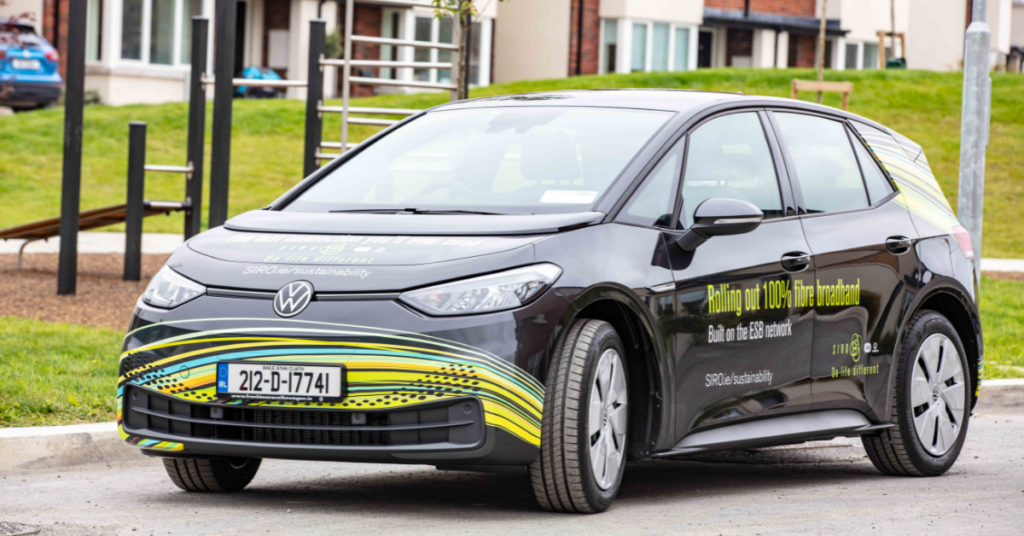 Work on developing and activating the Strategy, which encompasses environmental, social and governance (ESG) issues relevant to the company and its operations, began in 2018 leading to today’s launch at our Carrickmines offices. Our broadband network is 100% fibre, with no copper at any point, also making it significantly more energy efficient (by up to 60% and emitting less carbon emissions (over 80% less) than traditional copper or cable broadband networks).
Work on developing and activating the Strategy, which encompasses environmental, social and governance (ESG) issues relevant to the company and its operations, began in 2018 leading to today’s launch at our Carrickmines offices. Our broadband network is 100% fibre, with no copper at any point, also making it significantly more energy efficient (by up to 60% and emitting less carbon emissions (over 80% less) than traditional copper or cable broadband networks).
 According to SIRO CEO John Keaney: “Today’s launch is the culmination of several years’ work at SIRO, first to measure our outputs and impact on the environment and broader sustainability targets and second, to then act to become cleaner, greener and more sustainable as a leading Irish telecoms business."
Mr Keaney stressed the urgency for action: “Change is never easy or convenient. Becoming sustainable and protecting both people and planet is no longer a choice, but an essential, enduring activity; one which business leaders must champion. Technology can be a great enabler of more sustainable living.
SIRO’s 100% fibre broadband is empowering communities and businesses to become more sustainable in areas such as remote working and reduced commuting; smart homes and cities; enhanced business productivity reducing emissions and driving greater energy efficiency. SIRO’s fibre broadband network is also the cleanest broadband available today, using less energy than traditional copper networks and emitting significantly less harmful emissions. This further highlights the focus that all stakeholders must place on achieving a full fibre Ireland, not least because of the contribution it can make to Ireland meeting climate change and sustainability commitments”, added Mr. Keaney.
According to SIRO CEO John Keaney: “Today’s launch is the culmination of several years’ work at SIRO, first to measure our outputs and impact on the environment and broader sustainability targets and second, to then act to become cleaner, greener and more sustainable as a leading Irish telecoms business."
Mr Keaney stressed the urgency for action: “Change is never easy or convenient. Becoming sustainable and protecting both people and planet is no longer a choice, but an essential, enduring activity; one which business leaders must champion. Technology can be a great enabler of more sustainable living.
SIRO’s 100% fibre broadband is empowering communities and businesses to become more sustainable in areas such as remote working and reduced commuting; smart homes and cities; enhanced business productivity reducing emissions and driving greater energy efficiency. SIRO’s fibre broadband network is also the cleanest broadband available today, using less energy than traditional copper networks and emitting significantly less harmful emissions. This further highlights the focus that all stakeholders must place on achieving a full fibre Ireland, not least because of the contribution it can make to Ireland meeting climate change and sustainability commitments”, added Mr. Keaney.